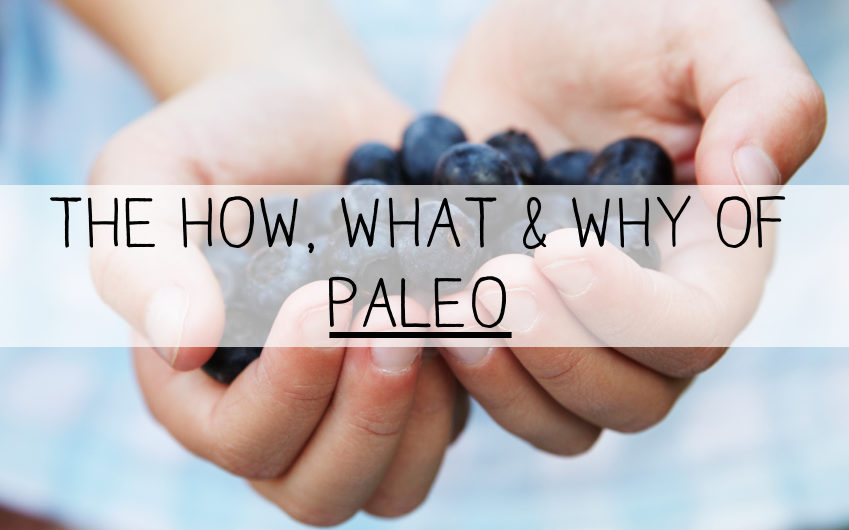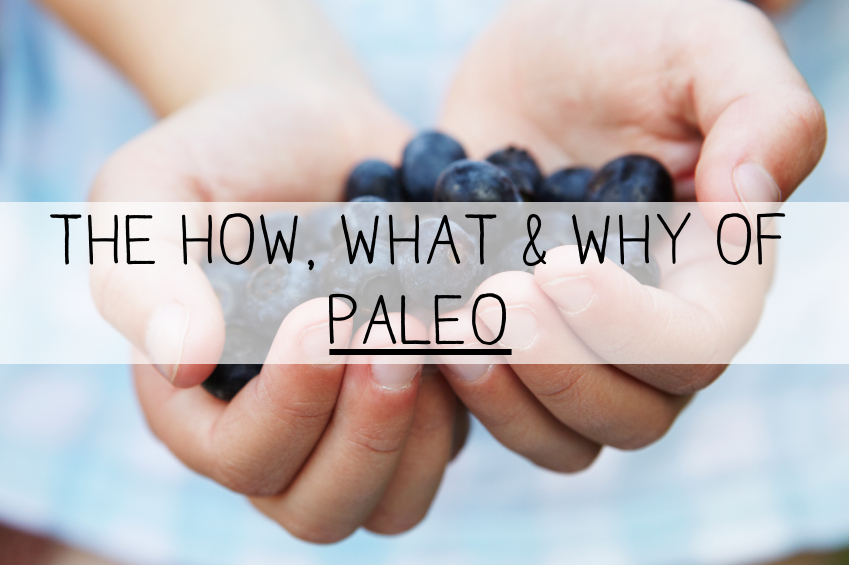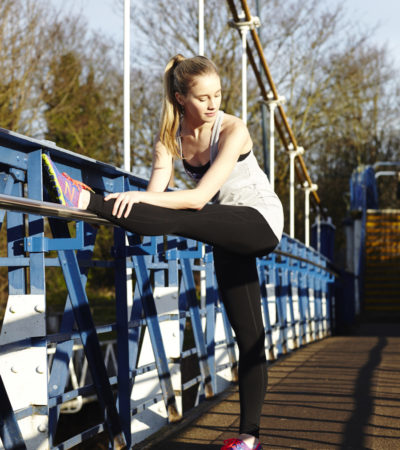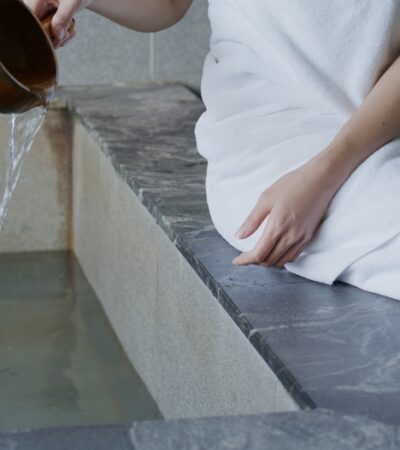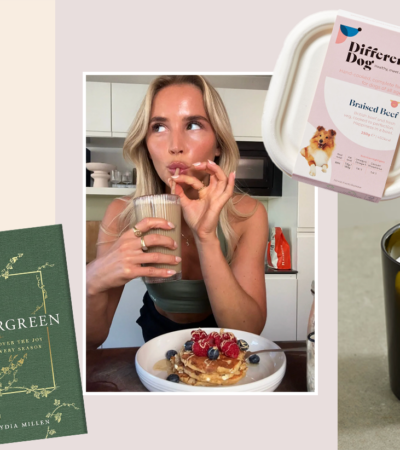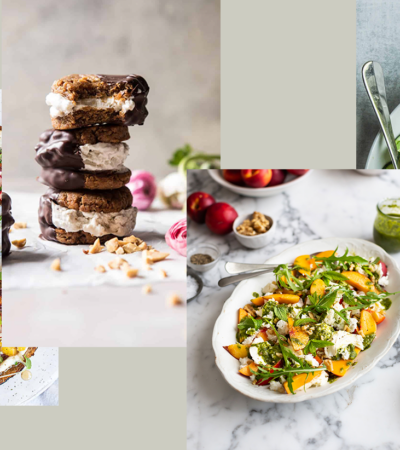When you hear the term ‘Paleo Diet’ what do you think of? Hairy cavemen? Flint? Berries? Hunger? I can see how these might come to mind; that’s what I thought when a friend mentioned it about a year ago. However, after hitting the library and finding out what it’s about, I feel like this way of eating has been specifically designed for me! Or maybe it has… and for you, and for your friends, and for all humans. Maybe it’s how we are supposed to eat, before we invented machines and random additives like disodium 5′-ribonucleotides (E635 – watch out for this one) to ‘flavour’ our food. It’s how our ancestors ate, and we wouldn’t be here without them, so what’s it all about?
Get to know your food
For me, it’s about ridding my body of processed food and making my stomach like me (which it rarely does). As a Hip & Healthy reader, you’re striving to be the best version of you. I certainly am. I want to avoid disease like the plague (no pun intended!) which is why I’m going down the Paleo route. It’s unlikely that Paleolithic hunter-gatherers were affected by modern diseases because of their diet. They ate mostly lean meats and plants and frequently engaged in intense physical activity. Admittedly they probably got eaten by a wolf, but we don’t need to worry too much about that, we’ve got bigger things to worry about, like type 2 diabetes and heart disease. The rise in cardiovascular disease, type 2 diabetes and obesity scares me. I know some people eat too much and don’t break a sweat, but maybe it’s not wholly their fault. When I gave up sugar 7 months ago, I was astounded to find out how many things contain sugar – have a look in your cupboard, nearly everything has added sugar even if it’s not sweet! So maybe the rise in cardiovascular disease, diabetes and other ailments is a result of us not knowing what’s in our food.
This is where the Paleo diet comes in: it takes us back to our roots and recalibrates the body so that we know what we’re eating. It’s about eating real food, not food that is processed and pumped full of unpronounceables. Paleolithic hunter-gatherer people ate varying proportions of leafy vegetables, fruit, nuts, insects, meat, fish, and shellfish, which are all extremely healthy and tasty…I’m not sure the local store sells insects, but I’ll give them a go if it does. They didn’t eat dairy, grains, legumes, added salt or added sugar. Recent evidence indicates that humans processed and consumed wild cereal grains as far back as 23,000 years ago in the Upper Paleolithic. However, seeds, such as grains and beans, were rarely eaten and never in large quantities on a daily basis, so these are best avoided.
Why should I go Paleo?
As already mentioned, the Paleo diet has huge health benefits as it strips away processed food and added nasties. It encourages you to go back to your roots and start again; to re-educate yourself about food. Think you’re going to starve if you don’t have traditional carbs like pasta and rice? Think again. By choosing the right vegetables, you can get all of the nutrients and carbohydrates that you need, without the stodgy feeling. In his book ‘The Paleo Solution’, Robb Wolf notes that “ we’ve moved from a nutrient-dense, protein-rich diet that was varied and changed with location and seasons to a diet dependent upon a few starchy crops. These starchy crops provide a fraction of the vitamins and minerals found in fruits, vegetables and lean meats. These ‘new’ foods create a host of other health problems ranging from cancer to autoimmunity to infertility.” Ok, enough with the scary stuff. Going Paleo should be a positive, uplifting experience, where you feel better and stronger everyday. Yes, there’ll be days when you’re plagued by cravings, but you’ll come out the other side, after eating your weight in nuts and berries, and you’ll be stronger for it.
But…
I like chocolate? And milk? Help?! Ok, I know. It’s daunting. I felt like that when I gave up sugar, but, take it slow, phase things out one at a time, and I bet you’ll feel fantastic. If you don’t, go back to how you were eating – nothing ventured, nothing gained – but I’ve got a sneaking suspicion that you’ll feel brilliant. And remember, there are millions of alternatives out there! How about almond milk instead of milk? (blend 1 cup of almonds with 750ml water, then strain the bits out – easy). You might have to adapt your taste buds, but they will adapt, and you’ll soon think cow’s milk tastes weird. How about making chocolate mousse using raw cacao powder and avocado? Weird…but tasty! See it as a fun experiment. That’s what I’m doing – join me!
If you want to give it a go, here it is in a nutshell (that you’ve foraged for):
EAT: meat (non-processed meat only – sorry bacon and sausages), fish, shellfish, all vegetables, fruit and nuts. In vast quantities if you like, you’ll be hard pressed to be obese by eating these.
AVOID: dairy, grains, legumes (e.g. beans and peanuts), salt, refined sugar and processed oils.
RESEARCH: do your homework. Read the facts and the science so that you’re in the know. Sometimes people are wary of new diets, so arm yourself with the knowledge needed to convince them of its worth.
DOCUMENT: keep a diary, just a short one, of how you feel each day. Maybe rate yourself out of 10 at a certain point in the day. It’s important to be aware of how you’re feeling so that you can decide whether Paleo’s right for your body.
ENJOY: enjoy going Paleo. Share it with friends and family, cook them new Paleo recipes, don’t sit at home feeling like you can’t eat anything – it shouldn’t be this way, life’s too short. Embrace it, share it and, of course, be the best version of you!
Words by Elle Young. Find more by Elle at www.thesugarfreekitchen.com

